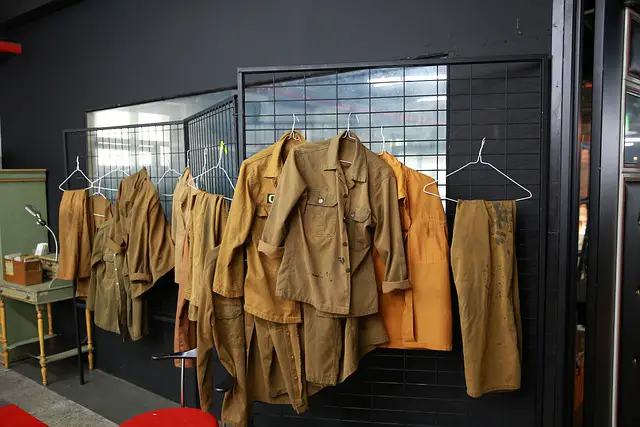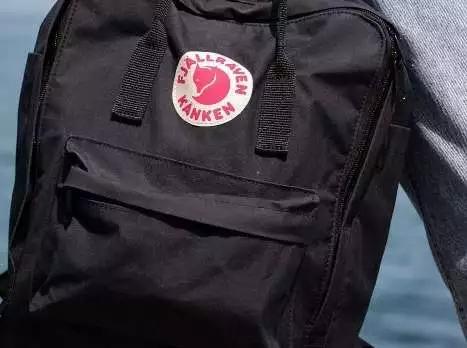After you have bought a piece of clothing, you always do your best to ensure that the clothing is well maintained. However, at times, we tend to hang our clothes in direct sunlight, and if we do that a couple of times, we find that clothes start to fade.
To sun fade clothes in the sun, you need first to wash your clothes with hot water. After that, you will hang the clothes to dry on a clothesline in an area where the clothes have a direct contact with the sunlight. Leave the clothes on the clothesline for 2 – 3 hrs. Then, repeat the process until you achieve the fade that you want.
It is essential to ensure that both inside and outside your clothes get equal exposure to the sun to have similar fades both inside and outside the garment.
In this article, we look at the sun fading in great detail. Read the entire article and have a better understanding of how you can sun fade your clothes, protect your clothes from sun fading, and how you can fix clothes that have been unintentionally sun faded by the sun.
1. What Is Fading In Clothes?
The dying of fabrics involves a chemical process that makes the dye entrenched in the fabric become part of the fabric. For dye to be part of a fabric, garment manufacturers have to use a process known as pigmenting.
Fading in clothes is also known as color fading, and it takes place when the color in the clothes loses its molecular attraction to the fabric. For many years, garment manufacturers have used dyes to have different colored garments.
In pigmenting, pigment is applied as a layer in the fabric fibers. When the pigment in a fabric loses its molecular attraction with the fabric, the color fades.
Fading in the fabric can be due to different reasons. For example, if the fabric was overdyed or the wrong type of dye was used to color the fabric, that fabric will eventually fade. Moreover, when dyes are rubbed against another surface, they transfer the color to that surface, thus resulting in fading.
To fade clothes, different techniques can be used. The most common and ideal method to fade clothes involves washing the clothes either by a washing machine or by hand washing a couple of times.
During the washing process, the fibers of the fabrics are relaxed, resulting in fading. Other fading techniques include leaving the clothes in the sun for a long time, bleaching the material, and using vinegar, salt, lemon juice, and baking soda.
2. Does The Sun Fade Clothes?
When clothes are exposed to the sun for long periods, the sun fades the clothes. This is because the sun emits electromagnetic radiation, which is the heat from the sun. When this heat from the sun comes into contact with a fabric with a pigment of color, the pigment is heated, resulting in the clothes fading.
It is important to note that it is not only clothes on the clothesline that can fade from the sun. Indeed, even when you are outside in the sun, your clothes are exposed to the electromagnetic radiation emitted by the sun.
Thus, even if you might not notice the sun fade, your clothes will eventually start fading when you are exposed to the sun for long periods.
To ensure that clothes are not susceptible to fade when exposed to the sun, some garment manufacturers apply an ultraviolet-resistant protective coat to the garments. Unfortunately, fabrics with UV-resistant coating cannot disappear even if they are constantly exposed to the sunlight.
If you don’t want your clothes to fade in the sun, you should always dry the clothes in an area without sunlight. Additionally, you can spray your fabric with UV-resistant coating that you can buy from local stores or online.
3. How Sun Fades Clothes
For a fabric to be dyed a specific color, the dye has to have color bodies capable of taking in the dye. These color bodies are referred to as chromophores.
In the dyeing process, the chromophores absorb all the wavelengths of the noticeable light and mirror the purposed color to the eye.
When the dyed fabric is exposed to the sun with ultraviolet radiation, the radiation heat breaks the chemical bonds present in the dye. This makes the pigment lose its molecular hold on the fabric resulting in fading.
The chemical process that makes the fabric fade is known as photodegradation.
4. How To Sun Fade Clothes
If you want to fade your clothes, one of the cheapest and easiest methods entails fading the clothes in the sun.
When clothes are exposed to the sun for extended periods, radiation from the sun results in a chemical reaction between the dye and the fabric taking place. It is this chemical reaction that makes clothes exposed to the sun fade.
5. Process Of Fading Clothes On Sun
Step 1: Read the care label on your garments
You will read the labels on your clothing and find out whether your clothes have been coated with a fade-resistant coating. If the garment has been coated with fade resistance, you can either abandon the sun fading it or remove the fade-resistant coating first.
Step 2: Wash the article of clothing in hot water
Wash your article of clothing with hot water. You can either use a washing machine or hand wash the garment. Washing clothes with hot water before the actual fading is essential since it activates fading as the hot water will disturb the dyes in the fabric.
Step 3: Hang the clothes on a clothesline
After cleaning your clothes, you now need to hang them on a clothesline that should be in an area that is exposed to the sunlight. Leave the clothes hanging for 3 hours. After 3 hours, turn the cloth inside out so that the inside side is also left in the sun for 3 hours. Repeat the process a couple of times until you get the desired fade.
It would help if you faded your clothes when the sky is clear and the sun is hot for the best results. Ideally, fading clothes in the sun should be done during the summer.
When you fade your clothes in the sun, the clothes will have a vintage all-style natural fade. However, even if fading your clothes in the sun is easy and cheap, you need to note that since you don’t have control of the sun, you cannot be able to have complete control of the fade.
When fading clothes in the sun, various factors will determine the outcome of the fade. For example, the nature of the dye, the method used to dye the fabric, and the nature of the fibers making up the fabric you are fading will determine the result of your clothes fading exercise.
For example, when you want to fade your curtains, you will need to leave your curtains exposed to the sun for a very long period to obtain a fade. However, if you are fading personal clothing, leaving the clothes in the sun for 3-5 hours once a week for a few weeks will fade your clothes.
6. How To Fix Sun Faded Black Clothes
If you hang your clothes outside in the sun for long periods, the clothes will have sun fade. Likewise, if you are working outside, and there is a lot of sun, your clothes will eventually have a sun fade.
When you have a sun fade that you did not intend to have, there is a chance that you will be able to fix the black clothes faded by the sun. Here is how you can fix your clothes that have been flagged by the sun.
To fix sun-faded black clothes, you can either dye the black clothes or use coffee.
Method 1: Fixing Sun Faded Black Clothes By Dyeing
What you will need
Black dye
Stainless steel basin
Sponge
Gloves
Craft Table
Plastic covering/ Old newspaper
Hot water
Wooden spoon/metal tongs
Stove/Cooker
Dryer/Clothesline
Step 1: Find out whether the faded black clothes will absorb dye
Natural fabrics are known to be good at absorbing dyes. However, some synthetic fabrics, such as spandex, will not absorb dyes. If your material cannot absorb the dye, you should not proceed. In addition, if the care label reads ‘dry cleaning only,’ do not dye the fabric.
Step 2: Cover the craft table with plastic covering/old newspapers
Cover the craft table with old newspapers or plastic covering. Also, wear your gloves since if the dye gets in your hands, it might take a few days before you wash the dye from your clothes.
Step 3: Fill the stainless-steel basin with hot water
Put the hot water in the stainless-steel basin. The water temperature should be between 1200F to 1400F. Ensure that water in the basin will be enough to submerge the sun’s faded black clothes fully.
Step 4: Mix black dye with hot water
Put the black dye in the hot water basin. Use the wooden spoon to ensure that the dye and hot water are well mixed. Ensure that you comply with the ratio specified by the dye manufacturer when mixing dye and water.
Step 5: Add detergent to the mixture of hot water and dye
Add one tablespoon of laundry detergent to the mix. This is important since it will help ensure that the fabric will well absorb the dye. If you want to intensify the color, you can add either a cup of table salt or white vinegar.
Step 5: Immerse the faded black cloth in hot water mixed with dye
Immerse the black clothes that are faded by the sun in the stainless-steel basin with a mixture of hot water and dye. Use a wooden spoon or metal tongs to ensure that the fabric is fully immersed in hot water with dye.
Step 6: Place the stainless-steel basin on top of the stove/cooker
Place the stainless-steel basin on top of the stove and turn the stove on. Leave the garments inside the heating dye bath for one hour. Ensure that you agitate the cloth in the dye bath every ten minutes with the wooden spoon.
Step 7: Take the clothes out of the dye bath and rinse it
After one hour, take the clothes from the dye bath and thoroughly rinse them with warm water. After rinsing with warm water, rinse the garment with cold water. It would help if you only stopped rinsing the dyed clothes with cold water after the water to rinse becomes clear.
Step 8: Dry the clothes either with a dryer or on a clothesline
After rinsing the clothes, you will dry them in the dryer or on a clothesline. If using a dryer, make sure you dry the clothes on a delicate cycle. If you dry the clothes on a clothesline, dry them away from sunlight.
Take note that drying clothes in the dryer has contributed to fading. Thus, it is recommended that you hang dry your darks rather than use a dryer.
Method 2: Fixing Sun Faded Black Clothes With Coffee
You will require
Washing machine
Black coffee
Coffee maker
Water
*This method is ideal when you do not want a dark black color. If you intend to fix the sun faded black clothes with a dark black color, then using dyes would be the best option.
Step 1: Load the clothes into a washing machine
Load the sun faded clothes into the washing machine. Set the machine to a standard wash cycle that uses cold water.
Step 2: Using the coffee maker, make the strongest coffee possible
In this method, you need to know that if you make a stronger coffee, the better the chances of getting a darker result. However, if you make light coffee, you will have a lighter complexion of the black color that will be restored.
Step 3: When the rinse cycle commences in the washing machine, add the strong coffee that you have just brewed
When the clothes you want to fix are about to be rinsed in the washing machine, pour two cups of freshly brewed coffee into the washing machine.
Step 4: Once the wash cycle is over, hang your clothes to dry
Hang the clothes to dry on a clothesline. Ensure that you hang the clothes away from sunlight since you don’t want to start the sun fading the clothes you have just restored.
7. Does Drying Clothes In The Sun Fade Them?
Yes, drying clothes in the sun will fade them. This is because when clothes come into contact with the sun, the clothes take in the heat produced by the sun.
This heat then breaks up the chemical bonds that exist in the dye. The breakup makes the pigment lose the molecular hold it has on the clothes, thus causing fading of the clothes.
Even when you are working in sunny conditions for a long, the clothes you are wearing will fade due to the sun. Unless the clothes have been treated with ultraviolet coating resistance, you will notice that the clothes you wear to work in the sun during summer eventually fade even if you have not dried them in the sun.
Moreover, if you keep your clothes in a location where they are exposed to sunlight, you will find that the clothes will eventually fade even if they are in the closet. As long as clothes are exposed to sunlight for an extended period, the clothes will fade unless they have a UV protective coating.
8. Does Sunbrella Fabric Fade?
Sunbrella fabric is made from acrylic and is 100% dyed. Since sunbrella fabric is 100% solution-dyed, it offers unmatched resistance to fading, with the only fabric close to it being outdoor fabric.
Because of its unique features, sunbrella fabric is commonly used in indoor and outdoor furniture, boat covers, and canopies.
Sunbrella fabric does not fade in the sun or other conditions. The fade resistance of the material can be traced to the manufacturing process of the fabric as ultraviolet stabilized pigments are integrated into the fabric during the manufacturing of sunbrella, thus providing the fabric with a color that cannot fade under the sun or bleed.
Even if sunbrella fabric is relatively high compared to other fabrics, the cost is justified as it is durable and resistant to sun and rain.
9. How Does Sun Bleaching Work?
Sun bleaching can be explained as the harm caused by the sun to the clothes and other fabrics that might either be inside or outside the house.
Even if you might view that anything inside the house cannot be sun-bleached, the sunlight passing through your window can bleach your clothes or other fabrics that it comes into contact with.
Sun bleaching occurs when objects are exposed to sunlight for extended periods. For example, if you leave your black shirt outside for a few days during summer, you will notice that the black color that existed when you bought the shirt will start to fade and become light back.
From a scientific perspective, sun bleaching occurs after the dyes that give an object its colors are degraded once they contact sunlight for extended periods.
If you want to bleach your clothes in the sun deliberately, you can either hang or lay the clothes out in the sun for extended periods.
When you leave the clothes in the sunlight for a few days and turn them as required to ensure that the sunlight is uniformly distributed on the clothes, you will be able to bleach your clothes with sunlight.
10. How Does Sun Bleaching Work On Diaper?
Sun bleaching entails using the natural phenomena of the sun to bleach your clothes and fabrics. For example, when you bleach diapers in the sun, the diapers will be whiter, sanitized, and free of stains.
When you put the diapers outside, where they will be exposed to natural sunlight for a long time, the color of the diapers will start to fade. Unfortunately, as the color of the diapers fade, the diapers are sun-bleached.
To sun bleach diapers, here is the process you should follow:
Clean the diapers as usual.
While the diapers are still wet, take them outside to a place with the sun.
Hang the diapers in the sun and let them dry.
Repeat the process a couple of time as needed.
When you leave your white stained clothes in the sun for a long time, heat from sunlight removes the stain and, at the same time, brightens the whites by breaking down the bonds that are in the stains to the extent that the bonds will not be able to hold any longer.
11. How To Stop Sun Bleaching Clothes
If you have noted that your clothes are sun bleaching, there are various measures you can put in place to stop the sun bleaching your clothes. Specifically, all you need to do is make sure that you avoid your clothes coming into contact with the sun.
If your closet is located in an area where the clothes come into direct contact with sunlight, you need to consider relocating your closet or blocking the sunlight. Moreover, if you are used to drying your clothes outside in the sun, you will need to start drying the clothes inside. Finally, you can buy a UV-resistant coating and spray it on your clothes to make them resistant to sun bleaching.
12. How To Reverse Sun Bleach Stains
When your clothes are exposed to the sun for a long time, you will find that they will have sun bleach stains. To reverse sun bleach stains, you can bleach the clothes if they are whites or dye them if they are darks. You can also add iron-on or sew-on patches to conceal the sun stains.
If the clothes stained by the sun are black, you can dye the clothes at home. You can brew the strongest coffee possible and load the clothes in the washing machine. Wash the clothes with a delicate cycle. When the washing machine is about to rinse the clothes, put the strong black coffee in the machine. After the wash cycle is complete, hang dry the clothes inside.
I prefer to dry clothes on the clothes instead of using a dryer since I have found that drying clothes in the dryer contributes to fading clothes.
13. Does Polyester Fabric Fade in Sunlight?
Polyester is a synthetic fabric. One of the common characteristics of most synthetic materials is that the fabrics hold dye firmly. As a result, they have high resistance to fading, while resistance chemicals added to the fabrics make them strongly resist fading.
Polyester, as a synthetic fabric, resists fading. Polyester cannot quickly fade in the sun since it holds dye firmly, while chemicals added during the manufacture of polyester make the fabric highly resistant to fade from sunlight.
14. Fabrics That Do Not Fade In the Sun
Both natural and synthetic fabrics do not fade in the sun. The natural fabrics that don’t quickly fade in the sun are; wool and wool blends, cotton, and cotton blends. The synthetic fabrics that will not fade in the sun easily are; acrylic, nylon, and polyester.
Concluding Remarks
Sun fading can be good when you want intentionally sun bleach your clothes, and it can also be harmful when your clothes are faded by the sun. Since you cannot control how the sun fades your clothes, you need to be careful when exposing your clothes to the sun.






